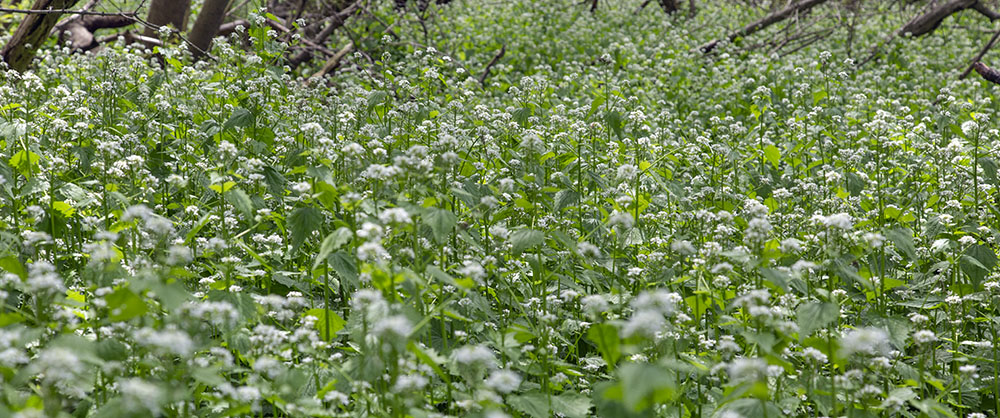
It’s GARLIC MUSTARD time!
May 24, 2020 | Topics: Issues
We are grateful to Caledonia Conservancy for these tips!
Now is the very best time to start to control garlic mustard. Garlic mustard is an aggressive invasive plant that can choke out the native woodland plants if left unchecked. The plant is a biennial. Right now, in late May, the white flowers are easy to spot. If you get rid of the plants before the seeds spread, you can start to control it.
There are 2 ways to do it:
- As you walk the trails in parks and natural areas, bring along a grocery or garbage bag and pull the entire plant, roots and all, and put it in the bag. The plant has a shallow root system so it is easily pulled. Look for areas where there are small clumps so it can be controlled there. Do not pull and lay it on the path as the plant will still have enough energy to set the seeds and the problem continues. If it is a huge area, bagging is not used, as it is overwhelming. When you get home, put the bag in your regular garbage can. Since it is an invasive, that is allowed. Our parks need all the help they can get to keep garlic mustard under control.
- Use your grass string trimmer / weed eater or any other cutter. It is not necessary to cut off the flower heads. Cut the whole plant as short as possible NOW. That way it does not have the time to grow new stems and flowers.
Be careful not to trample other plants in your efforts to eradicate the Garlic Mustard!
“Garlic Mustard (GM) is a biennial, meaning they flower every other year. The second year GM plants are now in flower. All their stored energy is being used to set seeds. Cut them as close to the ground as possible now. They will not have the time or energy to recover. Do it now and reduce next year’s spread of GM.

Garlic Mustard can grow in dense shade or sunny sites. Plant stands can produce more than 62,000 seeds per square meter to quickly out compete native plants, changing the structure of plant communities on the forest floor. GM is also allelopathic, producing chemicals that inhibit the growth of other plants and mychorrizal fungi needed for healthy tree growth and tree seedling survival.
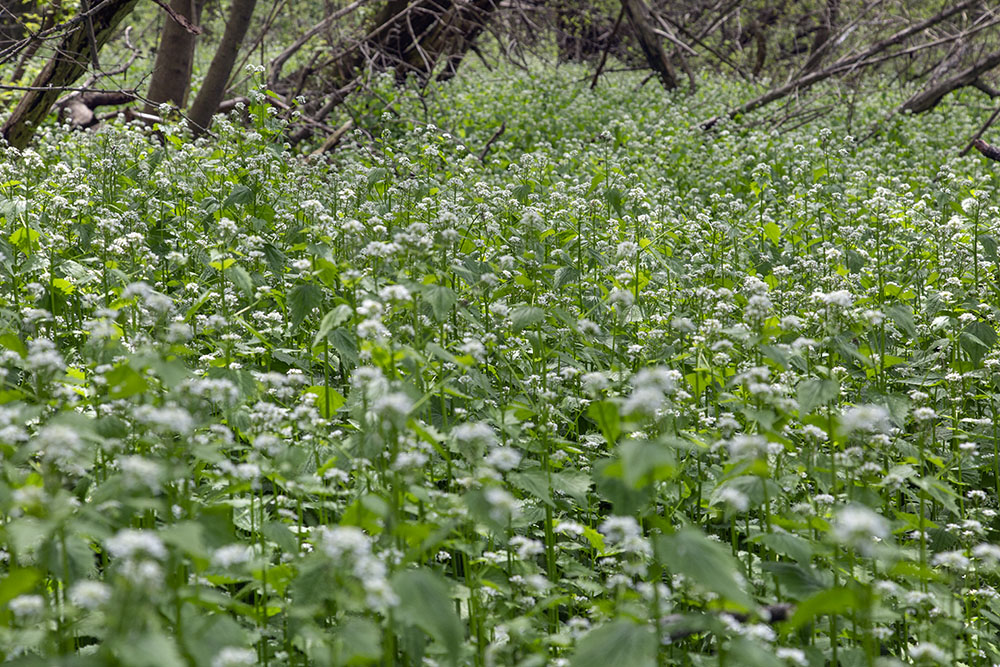
Remember it is spring and there may be ticks out. Put your socks up over your pant legs to keep them off your legs. It also helps to spray with Off or an insect repellent before you start. Make sure you check for ticks after you are finished.
*****
And this just in, thanks to our friend Ney Tait Fraser, who shot the images below to share with us of the kinds of native spring flowers that Garlic Mustard is likely to crowd out.
She adds this observation:
The only way to get rid of Garlic Mustard is to pay young people a decent wage to pull it. A friend’s daughter gets paid more to pull mustard on private property than she would get from teaching violin or from baby sitting.
The group Cream City Conservation was started by August Ball. Corporations provide gear such as Timberland boots and the young members of Cream City Conservation get paid to remove invasive plants such as dames rocket, burdock, garlic mustard and buckthorn. Learning to distinguish invasives from valuable native plants is a win-win job!

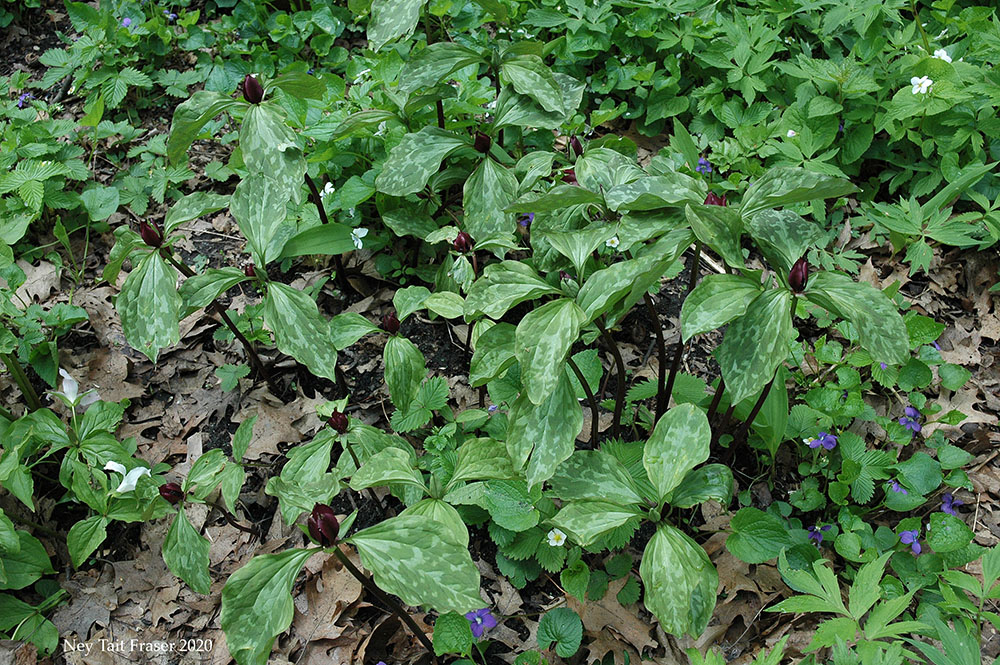
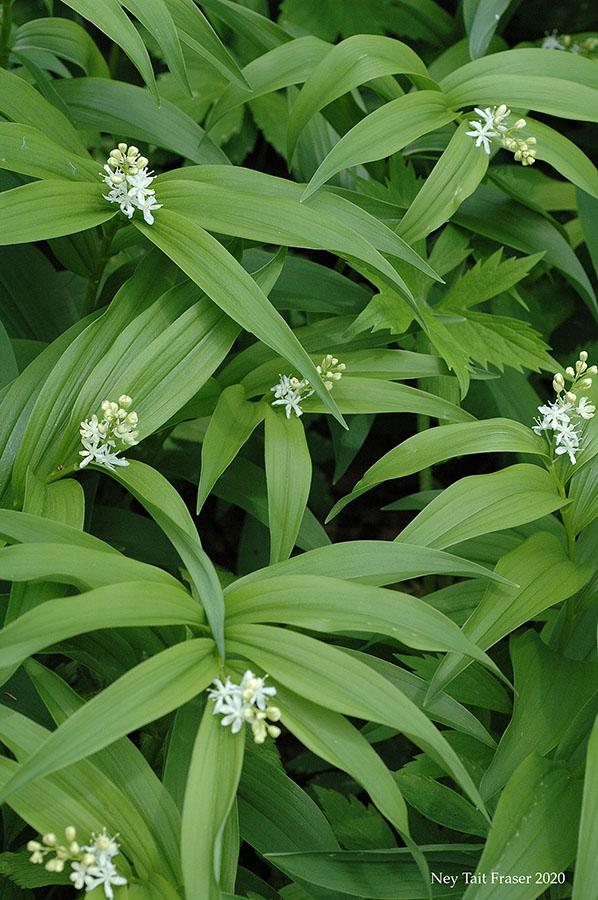

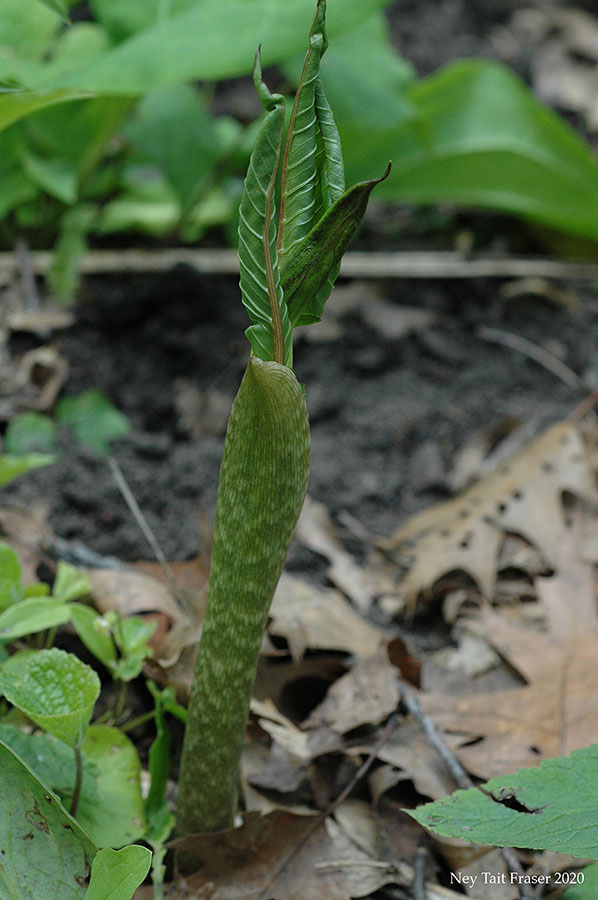
Caledonia Conservancy and Cream City Conservation are project partners of A Wealth of Nature. Ney Tait Fraser is a member of the Friends of Doctors Park. Photos of garlic mustard by Eddee Daniel.

